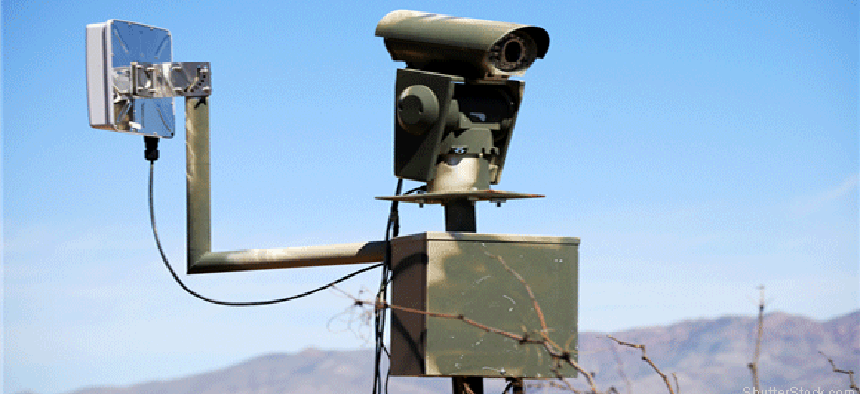Lawmaker, DHS chief spar at hearing over border wall tech

Technology is a key to an effective border wall, the acting head of the Department of Homeland Security told a Senate panel.

The acting head of the Department of Homeland Security told a Senate hearing that sensors, artificial intelligence, cameras and other technologies are critical elements of border protection -- along with the controversial wall project that is a signature political issue for President Donald Trump.
In a Senate appropriations subcommittee hearing on the DHS 2021 budget proposal that touched on issues ranging from corona virus to election security, Acting Secretary Chad Wolf said that although the wall is a vital part of the agency's border security strategy, it is a piece of a larger picture that includes increasingly effective technology.
The technological capabilities that accompany the wall, Wolf said, "are night and day" compared to the old landing-mat fence put in decades ago. "Lights, cameras, radar and fiber-optic" technologies are making a difference now, he said.
Wolf told the Homeland Security Subcommittee that the fiscal 2021 budget request for $2 billion for construction of 82 miles of "border wall system" includes sensors, lighting and other supporting technology.
Along with the wall, Wolf said the budget would provide $28 million to deploy 30 moveable autonomous surveillance towers along the border that would provide "persistent electronic surveillance in remote areas of the border" without border protection officers. The data from the towers will be transmitted in real time to Customs and Border Protection's Air and Marine Operations Center and local Border Patrol stations for processing, threat determination and response execution, Wolf said.
The proposal would also provide money to upgrade border aircraft and replace non-high definition electro optic/infrared sensors, outdated mapping systems, video displays, recorders and data links.
Sen. Jon Tester (D-Mont.) stated that technology offers effective operations and fewer headaches than a physical wall.
According to Tester, fights over the property that will be used for wall -- such as a current dispute in Arizona with a native-American tribe that owns land that saddles the border and eminent domain court cases with Texas landowners -- can be blunted, or avoided, if technology were used instead of a physical wall. Technology takes up less room and can be located outside of critical areas, such as tribal lands, for remote monitoring, the Montana Democrat said.
"You brought up the things that are going to keep this country safe. It's not a steel wall," Tester told Wolf. Border technology, he said, "is more effective than a wall." Technology can be changed out as it advances, he said, but a wall remains a wall.
"In 20 years, a president may say, 'Tear down this wall,'" said Tester, as technology proves a more effective choice for protecting the border.
When Tester raised concerns about DHS waiving federal procurement rules for border wall construction, including those mandating open bid competition and cost justification, Wolf said the waiver was to speed up construction of the wall by shortening time from contract award to construction.
"But, doesn't your procurement law eliminate any bidding, any protest? So, the question is how do we hold these folks accountable if they get a sweetheart deal?" Tester asked.
Wolf responded that the wall contractors had already been approved and were already working on the wall in various sectors. "So, the idea is to, again, add on to those contracts as that additional wall and that additional property become available," he said, likening the arrangement to an indefinite-delivery, indefinite-quantity contract common in federal procurement for large quantity items.
Tester also pressed Wolf on whether there were small business companies on the wall contractor list. Wolf said he would look into it.
NEXT STORY: AWS looks to expand record in JEDI lawsuit





